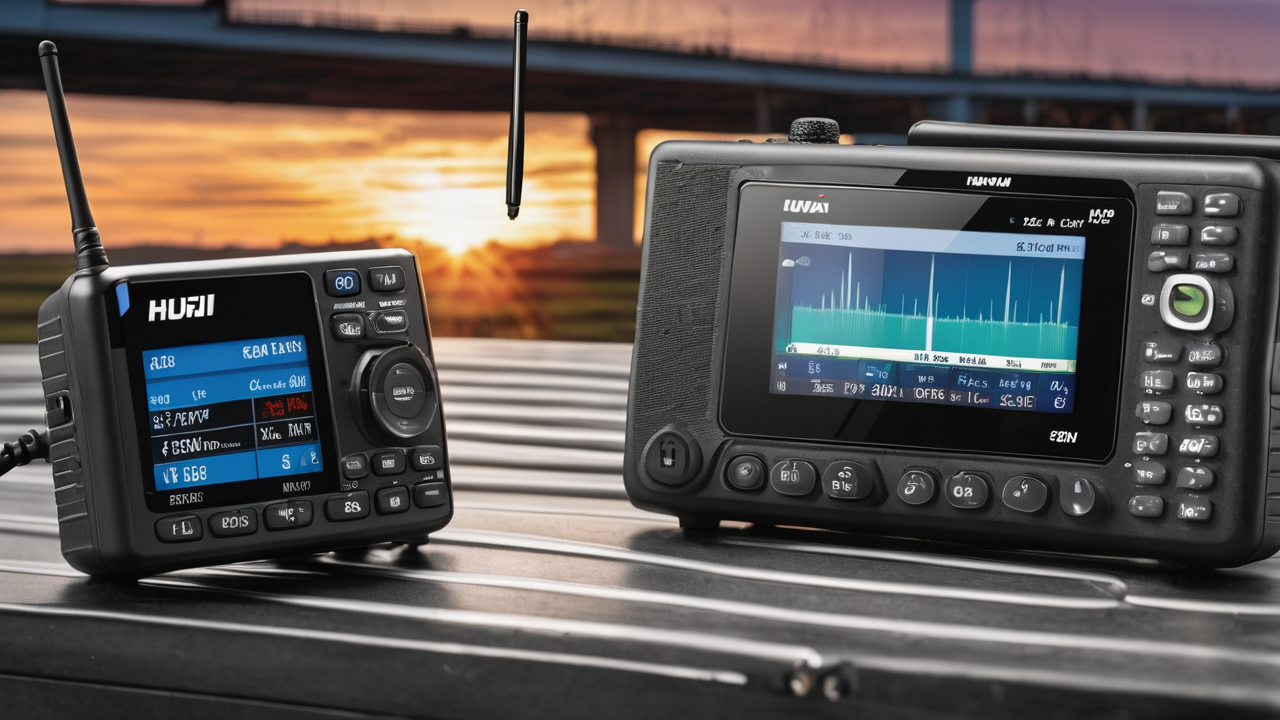Introduction to Radio Frequency Allocation
Overview of Frequency Bands in the United States
Radio frequency bands in the US are carefully managed by the FCC. They range from low to high frequencies. Each band has specific uses and limitations. The most common bands for two-way radios are VHF and UHF.

VHF operates between 30 and 300 MHz. It's great for outdoor use and long-range communication. UHF, on the other hand, spans 300 MHz to 3 GHz. It works well indoors and in urban areas.
Other bands include HF, which is below 30 MHz, and SHF, above 3 GHz. Each serves different purposes in radio communication. Understanding these bands is crucial for effective radio use.
Importance of Frequency in Two-Way Radio Systems
Frequency plays a vital role in two-way radio systems. It affects range, clarity, and overall performance. The right frequency can make or break your communication setup.
Lower frequencies tend to travel farther and penetrate obstacles better. Higher frequencies offer more bandwidth and clearer signals in some settings. Choosing the right frequency depends on your specific needs.
For example, a construction site might benefit from UHF's ability to penetrate buildings. A farm, however, might prefer VHF for its long-range capabilities in open areas.
Proper frequency selection ensures reliable communication. It helps avoid interference and maximizes efficiency. This is why understanding frequency bands is key to optimizing walkie talkie distance.
Analyzing the Effect of Frequency on Walkie Talkie Distance
The Role of Frequency in Signal Strength and Audio Quality
Frequency directly impacts signal strength and audio quality in walkie talkies. Lower frequencies generally offer stronger signals over long distances. They can bend around obstacles and travel through some materials.

Higher frequencies provide clearer audio in certain environments. They're less affected by background noise and electrical interference. However, they don't travel as far or penetrate obstacles as well.
VHF signals, for instance, can travel far in open areas. They're ideal for outdoor use. UHF signals are better at penetrating walls and buildings. This makes them suitable for indoor or urban use.
The choice between VHF and UHF affects both range and clarity. It's a balancing act between distance and audio quality. Understanding this relationship helps in selecting the right frequency for your needs.
How Frequency Affects the Range of Two-Way Radios
Frequency has a significant impact on the range of two-way radios. Generally, lower frequencies travel farther than higher ones. This is due to their wavelength and how they interact with the environment.
VHF waves, being longer, can travel over hills and through valleys. They're less affected by small obstacles. This makes them ideal for long-range outdoor communication.
UHF waves are shorter and don't travel as far. However, they're better at penetrating buildings and urban environments. In cities or indoors, UHF often outperforms VHF in terms of effective range.
Weather and terrain also play a role. VHF performs better over water and flat land. UHF is more reliable in areas with lots of buildings or dense foliage.
Understanding these factors helps in choosing the right frequency for maximum range. It's not just about distance, but about effective communication in your specific environment.
Best Practices for Choosing Frequency Bands in Radio Communication
Navigating FCC Regulations for Radio Operation
The FCC sets strict rules for radio operation in the US. Understanding these regulations is crucial for legal and effective communication. Different frequency bands have different rules and requirements.

Some bands require licenses, while others are open for public use. For example, GMRS requires a license, but FRS doesn't. It's important to know which bands you can legally use.
Power limits also vary by band. FRS radios are limited to 2 watts, while GMRS can go up to 50 watts. Higher power can mean longer range, but it must comply with FCC rules.
Always check current FCC regulations before operating a radio. Rules can change, and staying informed helps avoid fines and ensures proper use. Compliance is key to responsible radio communication.
Techniques for Selecting Optimal Frequencies for Walkie Talkies
Choosing the right frequency for your walkie talkies involves several factors. Consider your environment, range needs, and intended use. Here are some techniques to help you select:
- Assess your terrain: Open areas benefit from VHF, while urban areas suit UHF.
- Determine range needs: Longer range? Consider lower frequencies.
- Check for interference: Use a frequency scanner to find clear channels.
- Consider privacy needs: Some bands offer more privacy features.
- Evaluate power requirements: Match frequency to allowed power levels.
Remember, no single frequency is perfect for all situations. Often, a combination of frequencies works best. Test different options in your specific environment for optimal results.
Case Studies: Successful Radio Communication Strategies
Let's look at some real-world examples of effective frequency selection:
- Mountain Rescue Team: They use VHF for long-range communication in remote areas. VHF's ability to travel over hills and valleys proves crucial in their operations.
- Urban Security Firm: UHF radios help them communicate clearly inside buildings. The signal's ability to penetrate walls ensures consistent coverage throughout their patrol areas.
- Large Farm Operation: A mix of VHF and UHF serves them well. VHF for long-range field communication, UHF for clear signals near buildings and equipment.
- Construction Company: They opt for UHF to overcome noise and obstacles on job sites. The higher frequency cuts through interference from machinery.
These cases show how tailoring frequency choice to specific needs leads to success. Each scenario required a different approach, highlighting the importance of understanding frequency bands.
In conclusion, optimizing walkie talkie distance involves more than just power. It requires a deep understanding of frequency bands and their properties. By carefully selecting the right frequency for your environment and needs, you can significantly improve communication range and quality. Remember to always operate within FCC guidelines and regularly reassess your communication strategy as needs change.


